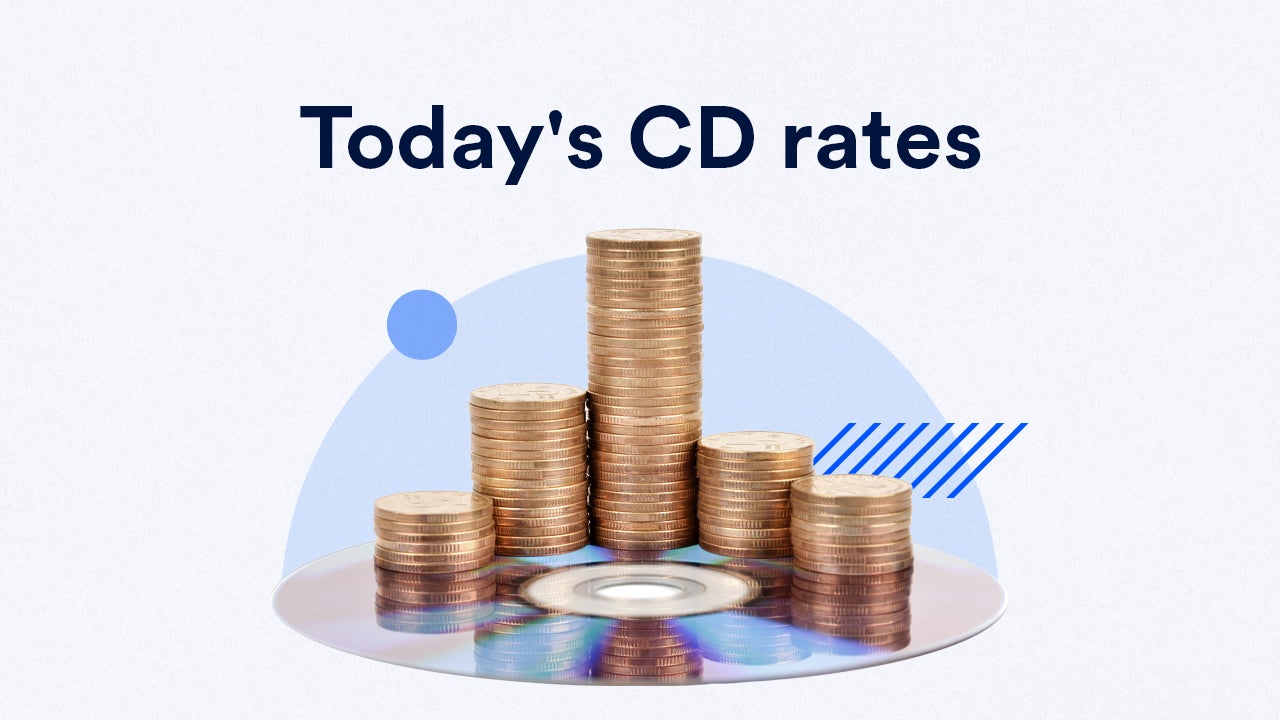Top CD rates today: April 17, 2025 | Take advantage of rates up to 4.50% APY

The Bankrate promise
At Bankrate we strive to help you make smarter financial decisions. While we adhere to strict , this post may contain references to products from our partners. Here's an explanation for .
Key takeaways
- The highest CD rate across terms is 4.50 percent APY, offered on a six-month term.
- In addition to choosing a CD based on APY, be sure to pick a term that suits your financial goals.
- Top CD yields are starting to fall slightly.
Three declines were seen today for annual percentage yields (APY) among the top certificates of deposit (CD) that Bankrate monitors. The top rate for the three-month term saw a drop after Bask Bank lowered its rate from 4.50 percent to 4.35 percent. Popular Direct takes over the top spot for this term with an APY of 4.40 percent.
Top rates for the nine-month and one-year terms also saw declines, with drops from 4.40 percent APY to 4.31 percent APY and from 4.40 percent APY to 4.35 percent APY respectively. Bask Bank was the previous leader for these terms as well. CIBC Bank USA and America First Credit Union take over as the new leaders.
Today's leading annual percentage yield across CD terms remains 4.50 percent. This yield is offered on a six-month CD term from Bread Savings. A minimum deposit of $1,500 is required.
Bankrate monitors CD rates every weekday, and today’s top rates are listed in the table below, along with national average rates and the amount you’ll earn with $5,000 in a high-yield CD.
Today's CD rates by term
| CD term | Institution offering top APY | Highest APY | National average APY | Estimated earnings on $5,000 with top APY |
|---|---|---|---|---|
| 3-month | Popular Direct | 4.40% | 1.43% | $54 |
| 6-month | Bread Savings | 4.50% | 1.92% | $111 |
| 9-month | CIBC Bank USA | 4.31% | N/A | $161 |
| 1-year | America First Credit Union | 4.35% | 2.01% | $218 |
| 18-month | TAB Bank | 4.16% | 2.26% | $315 |
| 2-year | SchoolsFirst Federal Credit Union | 4.15% | 1.77% | $424 |
| 3-year | America First Credit Union | 4.15% | 1.69% | $649 |
| 4-year | America First Credit Union | 4.20% | 1.82% | $894 |
| 5-year | SchoolsFirst Federal Credit Union | 4.25% | 1.69% | $1,157 |
Note: Annual percentage yields (APYs) shown are as of April 17, 2025. APYs for some products may vary by region.
N/A: Not available; Bankrate doesn’t track national averages for the 9-month CD term due to limited available data. Estimated earnings are based on the highest APYs and assume interest is compounded annually.
When is a CD a good idea?
A CD can be a good option when you find one with a competitive rate and you can afford to lock in the money for the entire term. Most CDs charge an early withdrawal penalty for taking out the money before the maturity date. An upside to such a penalty structure is you’ll be less tempted to withdraw the money early and use it for impulse purchases.
Recent trends in top CD rates
Competitive CD APYs trended downward throughout 2024 and are decreasing slightly in 2025. For example, the highest one-year CD APY at the start of January 2024 was 5.66 percent, whereas it was 4.35 percent on April 17, 2025. Among the popular terms Bankrate monitors for this page, all rates saw steeper declines in the second half of 2024, as compared to the first half.
CD glossary
Here are some terms you’ll likely come across when choosing a CD.
- Add-on CD: An add-on CD enables you to make additional deposits after your initial investment. This feature affords more flexibility than traditional CDs, which only allow one deposit at the beginning of the term.
- Annual percentage yield (APY): A percentage that indicates how much interest a CD earns in one year, which takes into account the effect of compounding.
- Brokered CD: A type of CD issued by a bank but sold through a brokerage firm or other financial institution.
- CD ladder: An investment strategy that involves purchasing multiple CDs with varying maturity dates to provide liquidity and take advantage of higher rates.
- Early withdrawal penalty: A fee charged if funds are withdrawn from a CD before the maturity date. Penalties often range anywhere from 90 days to 365 days’ worth of interest.
- Grace period: A specific time after the maturity date during which an account holder can make changes to the CD without penalties. A grace period typically ranges from five to 14 days.
- IRA CD: A CD that’s held within an individual retirement account.
- Minimum opening deposit: The lowest amount of money required to open a CD account, which can vary by institution. Some institutions don’t have a minimum deposit requirement.
- No-penalty CD: A type of CD that allows you to withdraw your money without facing a penalty while providing a fixed APY.
- Promotional CD: Also known as a bonus or special CD, it’s a CD with an above average APY. These may be offered by banks and credit unions as a way to obtain new customers.
- Jumbo CD: A CD that has a high minimum balance requirement, typically $100,000, sometimes as low as $95,000. This type of CD could potentially offer a higher interest rate than regular CDs with the same term.
- Bump-up CD: Also known as a “raise-your-rate CD,” a bump-up CD provides savers with the option to increase the CD’s APY without having to change its term. Generally, only one rate increase is allowed during its term.